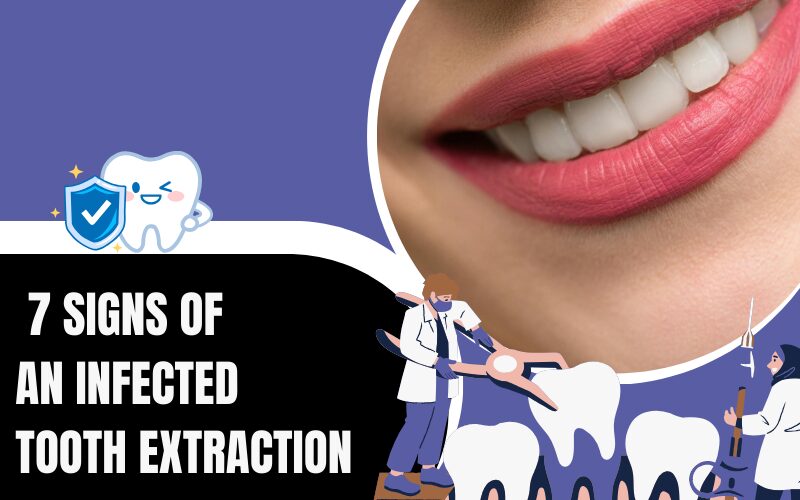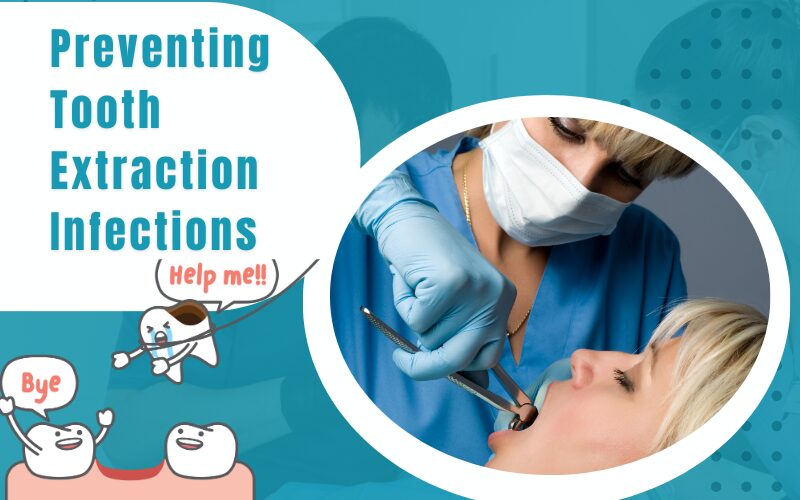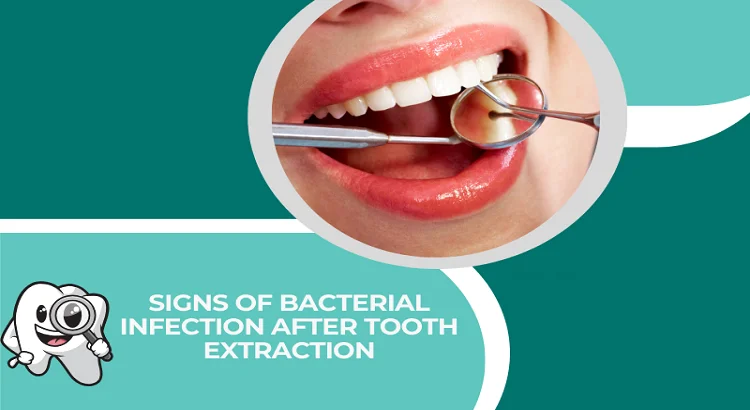Are you experiencing discomfort after tooth extraction? There might be chances of bacterial infection after the procedure. Infection after extraction occurs when bacteria enter the space where the tooth was. The signs of bacterial infection after tooth extraction are bleeding, pain, swelling, fever, bad breath, bad taste, and a strange sensation of discomfort.
If a bacterial infection is not treated, the patient can get sepsis. Sepsis is an infection caused by bacteria, viruses, or fungi that enter the bloodstream.
After entering the bloodstream, it can reach vital organs and cause problems. It causes viral infection, and bacterial infection, and affects the oxygen level in your body. A weak immune system and dislodged blood clots are the reasons for infection.
Understanding Tooth Extractions
Tooth extraction is a dental procedure performed by dental professionals to remove the infected tooth from the gum socket. It helps to prevent periodontal diseases and maintain oral health. Dentists may recommend tooth extraction for individuals with infected, decayed, periodontal disease or crowded teeth, especially if they are associated with toothache.
Sometimes, wisdom teeth that are stuck and unable to grow normally cause recurring infections and pain. It may be removed if other conservative treatments are ineffective.
In this procedure, the dentist will give you a local anesthetic to numb the area around the tooth, so you can’t feel any pain during the tooth extraction procedure. Firstly, they loosen the tooth and then extract the infected tooth from the gum socket.
Signs of an Infected Tooth Extraction

When the tooth is extracted, redness is normal for up to 48 hours. A little bit of bleeding is also normal and it stops in 7 to 8 hours after having a procedure.
But sometimes, instead of getting better, the pain at the extraction site might get worse, and this is one of the signs of bacterial infection after tooth extraction. Swelling in gum doesn’t fade away after 24 hours.
The bleeding doesn’t stop after 24 hours, or you might experience a weird taste and smell in the mouth. Moreover, there is pus formation around the extraction area, which isn’t the right indication.
1. Pain
Experiencing pain after a tooth extraction is common. Some pain and discomfort are quite expected. But problems occur when they don’t fade away.
Most commonly they should fade away within one or two days. If it doesn’t, there is a chance of infection. Consult your dentist as soon as possible.
2. Swelling
Swelling and redness are obvious after the procedure. These symptoms remain visible for 24 hours after the extraction, after which they begin to fade. However, instead of fading, they worsen. This is not a good sign.
3. Development of a Fever
Having a fever indicates several health issues. After a tooth extraction, having a high fever indicates a sign of infection. Contact your dental expert if the fever is 100.4°F (38°C).
4. Pus or Discharge
If yellow or white pus appears after extraction, or feel any abnormal sensations in the mouth. It is definitely a clear sign of an infection, and it’s essential to seek immediate dental care.
5. Bad Breath Or Taste
After extraction, you may experience an unpleasant taste and bad odour for two to three days. But if there is an acidic and bitter taste in the mouth, there may be a chance of infection.
6. Difficulty Opening Mouth
If you feel discomfort in opening your mouth or feel stiffness in your jaw, it can be due to infection or inflammation.
7. Bleeding
While there are many causes of gum bleeding, if there’s prolonged bleeding that started after extraction, it’s most likely due to an infection at the extraction site.
However, the duration of bleeding is what you should look into. Initial bleeding is quite common, right after the tooth is extracted. Over time, a clot will form to stop the bleeding. If the bleeding doesn’t stop and the site continuously bleeds for 24 hours or more, seek immediate medical attention.
Preventing Tooth Extraction Infections

As mentioned in the previous point, if you notice any of the symptoms, it is important to act carefully and with precaution.
1. Contact Your Dentist
After detecting an infection, contact your doctor immediately. They can prescribe medication to ease pain and provide remedies to stop the bleeding. See your dentist as soon as possible so that they can treat your infection with proper care and precaution.
2. Avoid Touching the Area
Avoid touching or poking the extraction site, removal of a tooth gives little discomfort. After some time you are used to it. But touching and poking a wounded area welcomes the bacteria that infect your empty sockets. So, avoid touching the wounded area.
3. Maintain Good Oral Hygiene
Always maintain good oral health. Good oral hygiene leads to healthy and strong gums and teeth. It helps to prevent infection and periodontal diseases. Brush your teeth twice a day, scrape your tongue, and use mouthwash to kill growing bacteria in your mouth.
4. Stay Hydrated and Eat Soft Foods
Make sure to drink plenty of water and eat food that is easy to chew. This will help you stay hydrated and increase the level of saliva in your mouth. Saliva helps to remove bacteria from the mouth. Eating soft food will not hurt the wounded area and will give it time to heal.
By, following these tips, prevent your tooth extraction site from infection. Be guided by these tips the wound heals quickly, and you can start thinking about replacing the empty sockets. Replacing a missing tooth with an alternative is important. if you don’t replace it, it can have a significant impact. There are risks of not replacing a missing tooth with alternatives on time.
Conclusion
Bacterial infections can occur when bacteria enter an open wound left behind after a tooth is removed. Some signs of bacterial infection after tooth extraction include pain, discharge, pus from the affected area, bad breath and taste, swelling, fever, bleeding, and difficulty opening the mouth.
If you experience any of these symptoms, it’s important to prevent tooth extraction infections by avoiding touching the affected area, maintaining good oral hygiene, staying hydrated, eating soft foods, and consulting with your dentist. Following these steps can help alleviate your pain.
